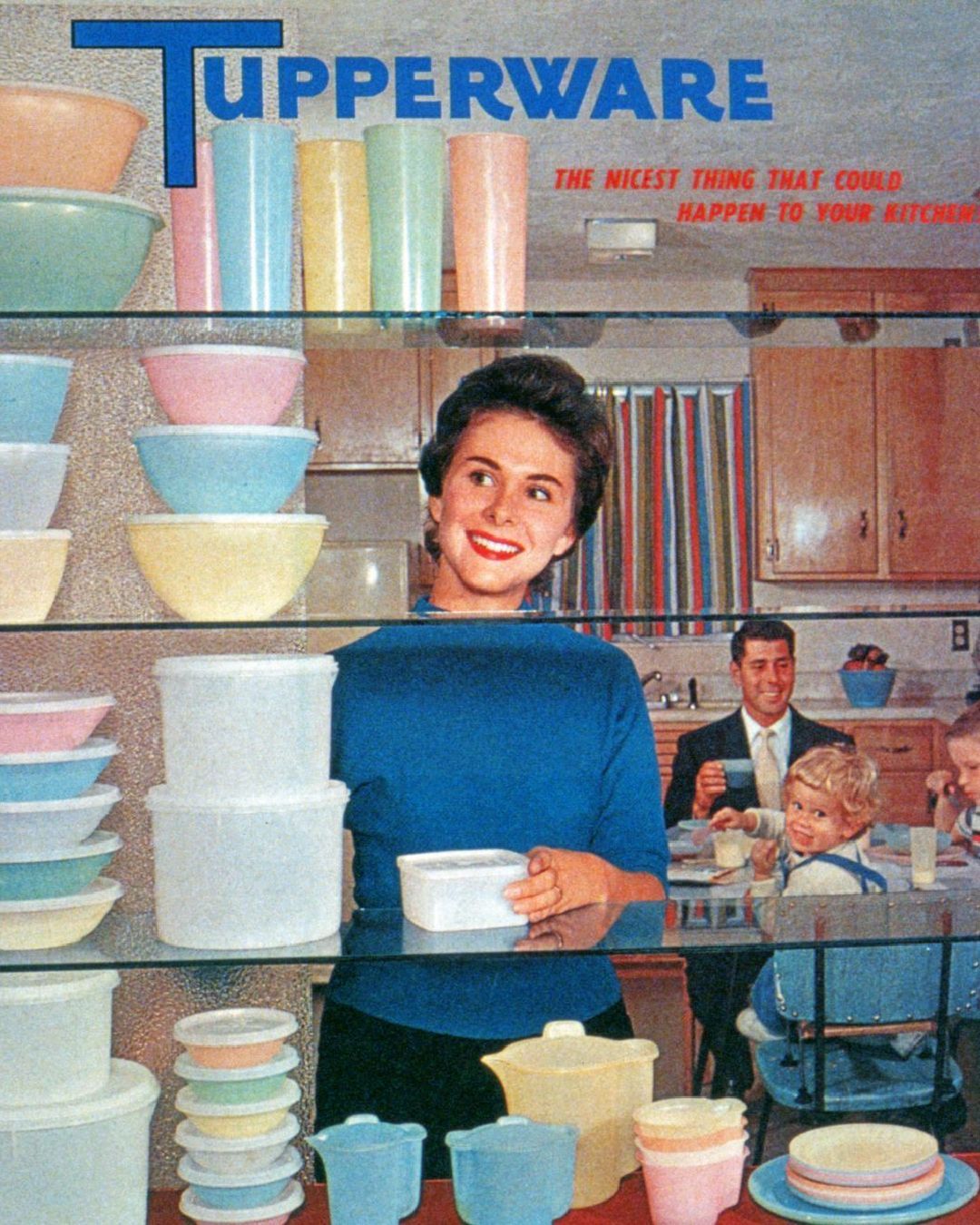
The reasons behind the rebranding of Tupperware After years of ups and downs, the company is trying to change its image
Food containers, usually used by students and workers during lunch breaks, are one of those items that are called by many different names. In Italian, they would be called “portavivande”, but the Milanese term “schiscetta” – or even “schiscia” when shortened – is also quite common. However, the most commonly used word is probably “tupperware”, named after the most famous company producing this type of plastic container. Despite the brand becoming so well-known over time, last year the company issued a statement expressing “serious doubts” about its ability to continue operating. Tupperware was, in fact, close to bankruptcy after several years of economic difficulties. Founded in 1946, the company had relied on door-to-door sales of its products for decades: the model continued to be used in more recent times, although it proved increasingly less suitable to meet the new habits of consumers, especially younger ones. Partly due to the limitations of this sales tool, known as “network marketing”, Tupperware gradually saw a significant reduction in revenues.
With the arrival of new CEO Miguel Fernandez – who had previously been an executive at Avon, another well-known company that sells beauty products door-to-door – Tupperware began to invest much more in e-commerce and online in general, to respond to the changing needs of consumers: in this way, revenues returned to grow significantly. The pandemic and subsequent lockdowns, with most families returning to cooking at home, led to a further, entirely unexpected sales increase, which, however, failed to stand the test of time. The company – which had been the undisputed leader in the sector for decades – has been affected in recent years by dual competition: that of products with similar functionality but more affordable and that of brands from the same market, but with designs and identities considered more contemporary and appealing. The fact that Tupperware's containers are made of plastic has not helped, given the growing focus – especially among younger generations – on using products with lower environmental impact. In recent years, the company has launched a program to make its offerings more sustainable by expanding its product range. Tupperware has thus embarked on a general restructuring process, attempting to ensure a more solid economic future for the company, and for this reason, a major rebranding of the brand was recently decided.
Tupperware, 1958. pic.twitter.com/SXC1CvLw7o
— Vintage Ads (@VintageAdz) March 31, 2015
In the past, Tupperware was so successful that even today, the company's name is usually used to refer to any plastic food container – a fact that underscores the brand's strong positioning on the one hand, but also highlights that its recognizability has gradually diminished over the years, blending in with the competition. For this reason, Tupperware opted for a massive rebranding, entrusted to the famous American agency Landor, which has also handled projects for Nike, M&M’s, and Renault. First of all, the company's logo was redesigned, with custom lettering that became the brand's main visual element: in the horizontal bar of the “T”, a lid is now represented, as if it were opening. In general, the brand's overall identity has been made more pop and dynamic: the products in the catalog now enjoy a wide variety of colors, shapes, and sizes – far from the traditional transparent containers – a bit “sad” and anonymous – in which food is stored.
Furthermore, in an attempt to present itself as a company attentive to environmental sustainability, the company has emphasized that its containers are the complete opposite of disposable ones – they can be used for a long time, over and over again. “For 75 years, we have been helping people reduce their daily environmental impact by offering reusable, practical, and durable products to reduce food and plastic waste,” reads the brand's Italian website. In this context, Tupperware seems to be carrying out a campaign to positively influence consumer habits in terms of meal organization and proper food storage, with the goal of raising awareness about the importance of reducing waste and their environmental impact, while also promoting savings.














































